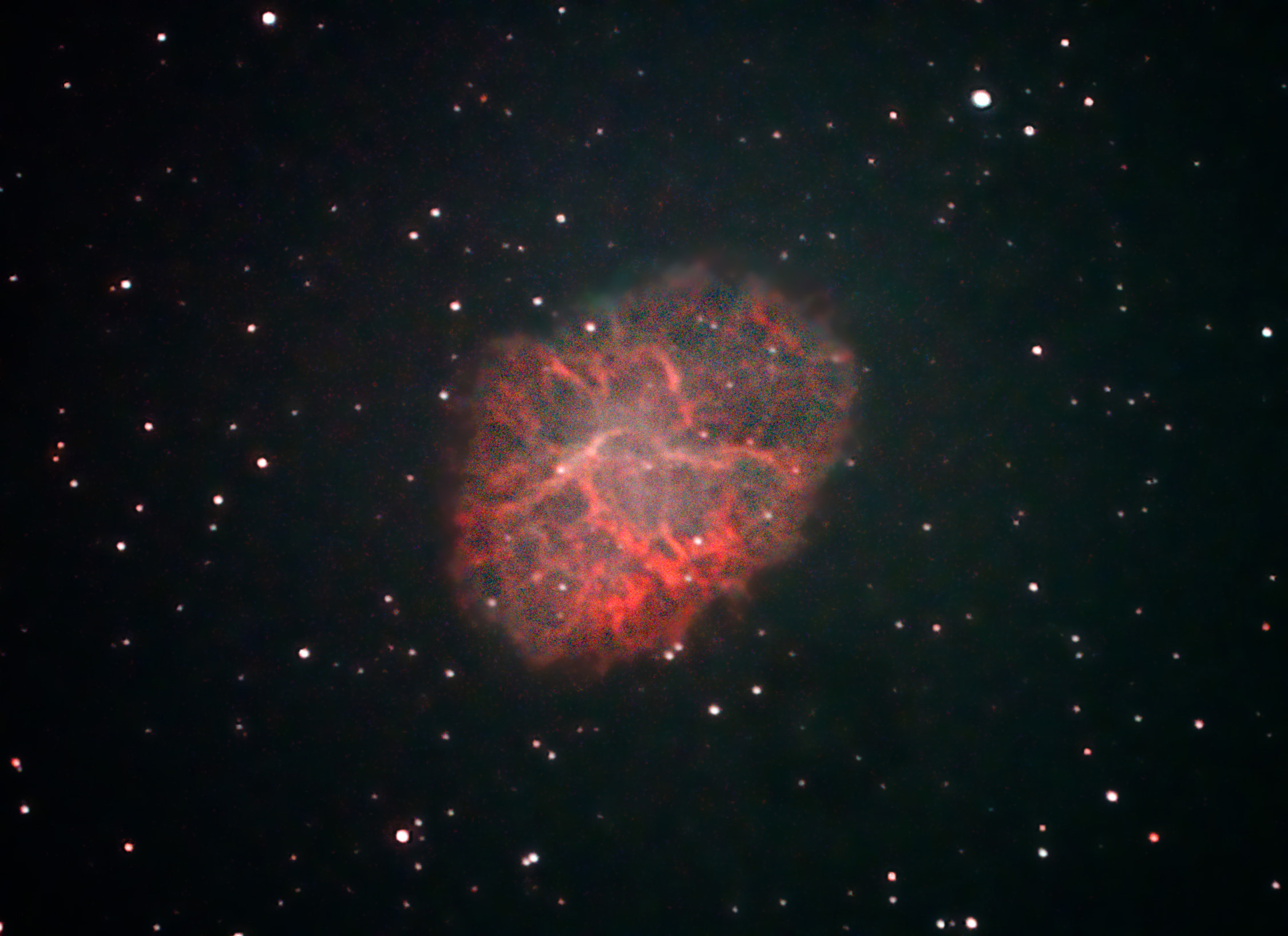|
Michael A. Stecker
|
|
M1 the "Crab Nebula"
Photographed from my Los Angeles backyard is the Crab Nebula (M1, NGC1952, Sh2-244) in Taurus. It was first seen by the Chinese in 1054 AD as a supernova explosion that decayed into the supernova remnant we see today. The nebula lies in the Perseus Arm of the Milky Way galaxy, at a distance 6,500 ly from Earth and a diameter of 11 ly. At the center of the nebula lies the Crab Pulsar, a neutron star of 17–19 miles across, which emits pulses of radiation from gamma rays to radio waves. At X-ray and gamma ray energies above 30 keV, the Crab Nebula is generally the brightest persistent gamma-ray source in the sky. The Crab Nebula consists of a broadly oval-shaped mass of filaments of the progenitor star's atmosphere, and consist largely of ionized helium and hydrogen, along with carbon, oxygen, nitrogen, iron, neon and sulfur. file: M1-400x6proc2-12672023cr3-rrrs.jpg Photographic Data telescope: Celestron 9.25-inch EdgeHD SCT at f/7 (focal length= 1,645 mm)
mount:
iOptron GEM45 controller/computer ZWO Asiair Plus via WiFi to Samsung 8-inch Tab A tablet . imaging camera: ZWO ASI533MC-Pro one-shot color astro-camera cooled to 14-degrees F with Optolong L-eNhanced nebula filter
guiding:
SVBony 60 mm f/4 guide scope (fl= 240 mm) with ZWO ASI662MC color camera for guiding (2.97 micron pixels) . exposures: 400 seconds X 6 (40-minutes)
processing
Stacked in Asiair Plus and cropped and post-processed in Adobe Photoshop Elements . photographic site: West Los Angeles California (Bortle 9 light polluted sky) |
